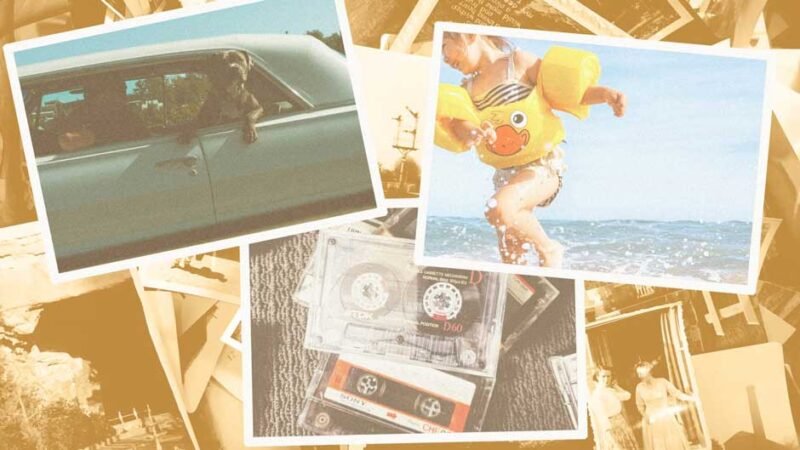Picture this: you’re scrolling through Netflix, and suddenly, a familiar theme song from your childhood pops up. Within seconds, you’re transported back to the living room you grew up in, sitting cross-legged on the floor, eating cereal, and watching your favorite Saturday morning cartoon. That’s nostalgia in action—and right now, it’s one of the most powerful forces shaping the entertainment industry.
From movie reboots and TV revivals to retro video games and even merchandise trends, nostalgia isn’t just about reminiscing—it’s become a business model. But why are we so captivated by the past? And more importantly, what does this mean for how we consume entertainment today? Let’s break it down.
The Psychology of Nostalgia
At its core, nostalgia is an emotional time machine. It’s not just about remembering an old show or a forgotten song—it’s about reliving how we felt during that moment. Psychologists say nostalgia offers comfort, especially during uncertain times. When the world feels unpredictable, going back to familiar stories and characters feels safe, soothing, and grounding.
Think about the wave of remakes and sequels in Hollywood—Disney turning animated classics into live-action films, or long-awaited sequels like Top Gun: Maverick smashing box office records. These aren’t coincidences. Entertainment companies understand that tapping into nostalgia means tapping into emotions, and emotions drive loyalty.
How Nostalgia Shapes What We Watch
You’ve probably noticed that half the trending shows today are revivals. From Fuller House bringing back the Tanner family to Stranger Things paying tribute to ‘80s culture, entertainment isn’t just creating new stories—it’s remixing old ones. And audiences can’t get enough.
Why? Because familiar characters and storylines don’t require effort. We already have a connection with them. It’s like catching up with an old friend—you don’t have to start from scratch. That emotional shortcut is what makes nostalgic content so addictive.
Streaming platforms have taken note. Netflix, Disney+, and Amazon Prime actively curate libraries of throwback shows and films, knowing that you’re just one click away from a comforting binge. They’re not just selling entertainment; they’re selling memories.
The Role of Technology in Nostalgia
Here’s where things get interesting: technology isn’t just delivering nostalgic content—it’s amplifying it.
- AI and Remastering: Old movies and shows are being digitally remastered in 4K, letting us experience them with the clarity of modern film. Suddenly, classics like The Godfather or Friends feel brand new.
- Social Media Trends: TikTok, Instagram, and YouTube have become playgrounds for nostalgia. A 15-second clip of an old song can go viral, sparking a new wave of interest in something decades old.
- Gaming: Retro consoles like the Nintendo Classic Edition sell out in minutes. Streaming platforms like Twitch are filled with gamers revisiting titles from the ‘90s, introducing them to new audiences.
Technology has essentially made nostalgia portable. We don’t have to dig through VHS tapes or dusty CDs anymore—we carry our favorite throwbacks in our pockets. That instant access makes nostalgia not only a feeling but a lifestyle.
Nostalgia Beyond the Screen
It’s not just movies and TV. Nostalgia is shaping fashion, music, and even the products we buy. Vintage band tees, vinyl records, and 2000s-inspired outfits are back in style. Brands know that people don’t just want entertainment—they want to wear their memories.
Take merchandise, for example. Concertgoers today are just as excited about grabbing merch as they are about the music itself. Wearing a shirt with a classic logo or retro design is a way of carrying a piece of your past into your present. That’s where tools like custom printed shirts come in handy, allowing fans to personalize nostalgia and literally wear it on their sleeve.
This trend extends to events, too. Ever notice how festivals and parties now feature “throwback” themes? Whether it’s a ‘90s night at a club or a decade-themed wedding, we’re constantly repackaging the past to make it part of today’s experiences.
Why We Can’t Get Enough of Nostalgia
Here’s the thing: nostalgia isn’t just a fad—it’s a coping mechanism. In a fast-paced, tech-driven world, where change is the only constant, nostalgia provides stability. When you watch a show you grew up with, you’re not just killing time—you’re grounding yourself in something familiar.
And businesses know this. That’s why studios, streaming services, and even retail brands lean heavily into nostalgia. It creates instant trust. You don’t have to be sold on something you already love—you just need to be reminded of why you loved it in the first place.
Actionable Takeaways: How to Make Nostalgia Work for You
So what can you take away from this trend beyond just enjoying it? Here are some practical insights:
- Be intentional about your throwbacks. Instead of mindlessly rewatching old shows, think about why they resonate with you. Is it the storytelling, the characters, or the soundtrack? Understanding this can help you choose new entertainment that matches your vibe.
- Mix old with new. Balance your nostalgic favorites with fresh discoveries. For instance, if you love ‘90s sitcoms, try watching modern shows inspired by them. You’ll get the comfort of familiarity while still exploring new ideas.
- Use nostalgia as connection. Sharing your favorite childhood movies or songs with friends, kids, or even coworkers can create instant bonding moments. Nostalgia is most powerful when it’s shared.
- Personalize your nostalgia. Whether it’s decorating your space with vintage posters or designing your own retro-inspired merch, lean into creative ways to make the past part of your present.
A Fresh Perspective
At the end of the day, nostalgia isn’t about living in the past—it’s about carrying the best parts of it forward. Entertainment companies have figured out how to harness it, but as viewers, we have the power to shape how we engage with it.
Instead of treating nostalgia as a guilty pleasure, think of it as a tool. It can comfort us during stressful times, inspire creativity, and even help us connect across generations. The key is balance: enjoy the comfort of the familiar, but don’t forget to leave space for the excitement of the unknown.
Because if there’s one thing the entertainment industry has shown us, it’s that the past isn’t gone—it’s just waiting for its next encore.







